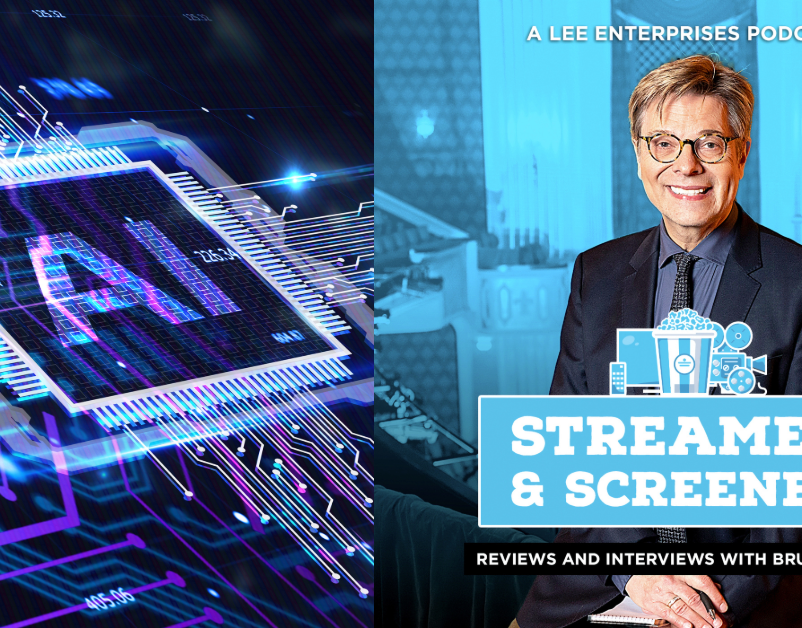
The future of education has never looked more creative and promising.
Since making its public debut last year, ChatGPT has profoundly impacted my perspective on generative AI in education. As a writer and former high school English teacher, I experienced an existential crisis watching the chatbot effortlessly generate lesson plans and rubrics — tasks that would have taken me hours to accomplish.
Generative AI allows educators to move beyond traditional learning systems and provide a more responsive, personalized learning experience in which students demonstrate mastery, not just passing grades.
Support The 74’s year-end campaign. Make a tax-exempt donation now.
“The future of AI in education is not just about adopting new technologies; it’s about reshaping our approach to teaching and learning in a way that is as dynamic and diverse as the students we serve,” XQ Institute Senior Advisor Laurence Holt said. He also formerly worked in the education, business and technology sectors. Through AI, we can also transcend the limitations of the Carnegie Unit — a century-old system in which a high school diploma is based on how much time students spend in specific subject classes.
Changing that rigid system is our mission at XQ. We work with schools and communities to transform high school learning so it’s more relevant and engaging while also preparing students to succeed in college, career and real life. We recently co-convened a two-day summit with the Emerson Collective, in partnership with MeshEd and Betaworks, to bring educators and innovators together in a collaborative space — envisioning ways to use AI technology for transforming high school redesign. Those ideas and insights are available to explore on this beta wiki page.
After a year’s worth of conversations and observations with educators, our AI convening and EdTech Week 2023, there is much to share with educators to help them make the most of the rapidly evolving ecosystem of artificial intelligence. Here are seven AI in education trends to be aware of next year.
1. Professional Development
Throughout 2023, demand for AI professional development for educators remained high. In 2024, we should see an avalanche of districts and schools providing their educators with AI professional development materials to integrate these tools into their teaching practices.
At PSI High, an XQ school in Sanford, Florida, MIT’s STEP Lab’s Sarah Wharton visited to present interesting ways to think about AI in the context of the school.
“We looked at ChatGPT as a possible tutor, personal assistant, creative tool and research assistant,” said PSI High School Coordinator Angela Daniel. “In our PD session, we considered how these cool applications could be used in classrooms as learning tools that accelerate learning and teach the tool simultaneously.”
Daniel explained that teaching students how to use AI is a first step that will change things for students going forward.“But to really get at the heart of that question, we need to understand how generative AI can change our processes and resources right now,” she added. For the team at PSI, that means learning how to use generative AI effectively with ongoing support as the application continues to evolve.
Workshops, online courses and collaborative learning communities are also increasingly popular for providing educators with hands-on experience in AI.
Want to stay on top of trends to help you rethink high school? Check out the XQ Xtra, a newsletter for educators that comes out twice a month. Sign up here.
2. Formal AI Policy
Integrating AI in classrooms is no longer a matter of “if” but “how,” making it imperative for educators and policymakers to navigate this terrain with informed and responsible strategies. However, the landscape of AI policy development — especially regarding education — has been dynamic, if not lagging.
The Council of Europe has continued providing critical insights for equitable policy and practice, an area where U.S. schools have been seeking guidance. New York City Public Schools, after initially banning ChatGPT, is now collaborating with academics, experts and school districts in the AI Policy Lab, focusing on issues such as privacy and cybersecurity. Recently, the Biden administration issued an executive order to guide the U.S. in leveraging artificial intelligence. This directive emphasized AI safety, privacy, equity and responsible use, signaling a shift in how AI is integrated into sectors like education. However, it is likely that AI policy in education will develop on a location-by-location basis first.
3. Open-Source Tool Development
Concerns about AI’s ethical implications and biases are sure to shape policy goals. One way to alleviate those pressures is the expansion and increased use of open-sourced tools — programs where the code is accessible and can be modified. The potential for AI to perpetuate biases is significant, however, expect the conversation to focus less on the output of AI tools and more on the kind of data it’s trained on.
Ensuring AI tools are equitable and inclusive goes beyond technical challenges — it requires continuous dialogue among educators, technologists and policymakers. This conversation is essential for addressing data privacy, surveillance and ethical use of student data. With a democratized, open-source marketplace, we could see the market promote open-sourced tools as they grow in popularity.
4. Frameworks for Teaching AI
Before the start of the 2023-24 academic year, educators and schools were waiting for a framework to guide their integration of AI tools. As policy moves forward in 2024 and more institutions develop professional development materials to train and support educators, expect AI curricula frameworks to finally emerge. Frameworks like TeachAI are being developed to guide the integration of AI in education. These frameworks focus on aligning AI applications with educational goals and promoting equitable access to technology, ensuring that AI complements and enhances student learning experiences.
5. AI Literacy, Competencies and Standards
With AI becoming more prevalent in various sectors, including education, there’s a growing need to integrate AI literacy goals and specific learning outcomes into school curricula. This involves teaching students how to use AI tools and understand the basics of AI technology, its applications and its implications.
At the Purdue Polytechnic High School network, an XQ partner with three campuses in Indiana, CEO Keeanna Warren explained how equipping staff and students with the knowledge and skills to harness AI’s potential promotes effective and responsible use of AI to enhance learning experiences.
“We firmly believe that our students’ innate curiosity drives their desire to learn, and we trust their integrity,” she said. “If AI can be used for cheating, it reflects a flaw in the assessment, not in our students’ character.”
The challenge lies in integrating AI literacy into an already packed curriculum. However, the opportunity to foster critical thinking, problem-solving and ethical reasoning skills through AI education is entirely possible.
6. AI-Powered Adaptive Learning Systems
One of the more exciting pathways with AI is that student learning experiences will become more uniquely adaptive and personalized with a quicker turnaround. But creating effective programs requires training these systems on some level of student data -– a delicate balance.
As policy formalizes how student data gets implemented into these programs, AI-driven adaptive learning systems will emerge to shift instructional practice. Expect these programs to appear prominently in assessments and curriculum packages before evolving into real-time feedback systems that can inform teachers even during a lesson.
7. Custom GPTs Built By Educators
While all these advancements are promising and exciting, the marketplace for AI-driven ed tech tools will become incredibly crowded quickly. Recently, OpenAI’s maker space for building and using custom GPTs, which both use and are built by ChatGPT, is guaranteed to be a massive disruptor.
Ty Boyland, school-based enterprise coordinator and music production teacher at Crosstown High, designed a custom GPT. (Crosstown High is another XQ school in Memphis, Tennessee.) Boyland’s students use Dall-E, an AI system for generating images, with GPT-4 to create designs and prints for student-driven projects.
“But how do you create a project combining culinary and music production?” Boyland wondered. His customized GPT pairs XQ’s competencies with Tennessee State Standards to build a new project.
It will be interesting to see what educators create in this space to resolve pain points teachers and schools are intimately familiar with and what gets made to help schools achieve their vision and mission.
The Bottom Line for Educators
From policy shifts emphasizing equity and privacy to the emergence of AI-driven curricula, the transformation is palpable. We’ve seen how AI can revolutionize and disrupt classroom practices, empower educators through professional development, and create inclusive, personalized student learning experiences. But the burgeoning AI ed tech market demands discernment. Educators must navigate this space wisely, choosing tools that genuinely enhance learning and align with ethical standards.
As we enter 2024, educators and stakeholders face a challenge: keeping pace with AI and engaging with it thoughtfully to catalyze educational excellence instead of just putting a new face on old practices. It’s the primary reason we at XQ convened so many educators and innovators into one space— to rethink high school by harnessing the potential of our AI-powered future. We look forward to sharing more with you in the coming year.
Do you want to learn more about how to rethink high school? The XQ Xtra is a newsletter for educators that comes out twice a month. Sign up here.
Disclosure: The XQ Institute is a financial supporter of The 74.




